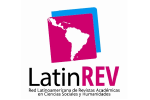"Symbaloo Lesson Plans" as a teaching tool in online education in Interior Design
DOI:
https://doi.org/10.18537/ripa.10.05Keywords:
Symbaloo Lesson Plans; ICT; recreational teaching; virtual environment; personalized learning; interior designAbstract
Currently, the advantages of technology are wasted and the application in pedagogical aspects is scarce, due to the current situation where the world faces the Covid-19 pandemic, education has become changing and has different needs. Training centers have seen the need to turn to interactivity and collaborative digital environments. This study provides, updates useful concepts, data and results on the use of the tool, Symbaloo Lesson Plans, which allows teaching /learning in these times of online education, through the use of digital resources. The students of the Interior Design Career at the University of Cuenca from the March-September 2020 cycle in the Nomadic Housing subject were considered, who faced the change from face-to-face to virtual education. The use of ICT in education, application, satisfaction and benefit in learning was analyzed; this was achieved by conducting quantitative studies. The research concluded that the application of new communication technologies contributed to the students' learning, in addition the stimuli were activated and accelerated the knowledge process through an appropriate environment for the student: it was shown that students have the interest of being partners of this new personalized learning method, in addition, with the implementation of this study, the integration, adaptation or improvement of ICT in other subjects of the career can be promoted in these times of online education.
Downloads
References
Artal-Sevil, J. S., Herrero Bernal , J. A., & Navarro Arqué, J. L. (2017). Lesson plans- symbaloo. Cómo desarrollar diferentes itinerarios interactivos para obtener un aprendizaje personalizado. Dialnet, 239-250.
Gisbert, M. A. (1997). El docente y los entornos virtuales de enseñanza-aprendizaje. En Recursos Tecnológicos para los Procesos de Enseñanza y Aprendizaje ICE Universidad de Málaga (p. 126-132). Málaga.
González-Díaz, C. I.-G.-P. (2017). Implementación de Symbaloo como repositorio de las materias en comunicación y medios.
Guevara, E., Pardo Gómez, M., & Izquierdo Lao, J. (2015). Gestión académica universitaria sustentada en las TICs. Caso Universidad Estatal. Revista Pedagógica Maestro y Sociedad, 9.
INEC. (Diciembre de 2013). Ecuador en cifras. Obtenido de http://www.ecuadorencifras.gob.ec/documentos/web-inec/Estadistica Sociales/TIC/Resultados principales 140515.Tic pdf
Moreno Correa, S. M. (2020). La innovación educativa en los tiempos del Coronavirus. Salutem Scientia Spiritus, 14-26.
Salinas, J. (2002). Modelos flexibles como respuesta de las universidades a la sociedad de la información. Universidad de Los Andes (ULA).
Salinas, J. (2004). Innovación docente y uso de las TIC en la enseñanza universitaria. Revista Universidad y Sociedad del Conocimiento, 16.
Published
Issue
Section
License

This work is licensed under a Creative Commons Attribution-NonCommercial-ShareAlike 4.0 International License.










